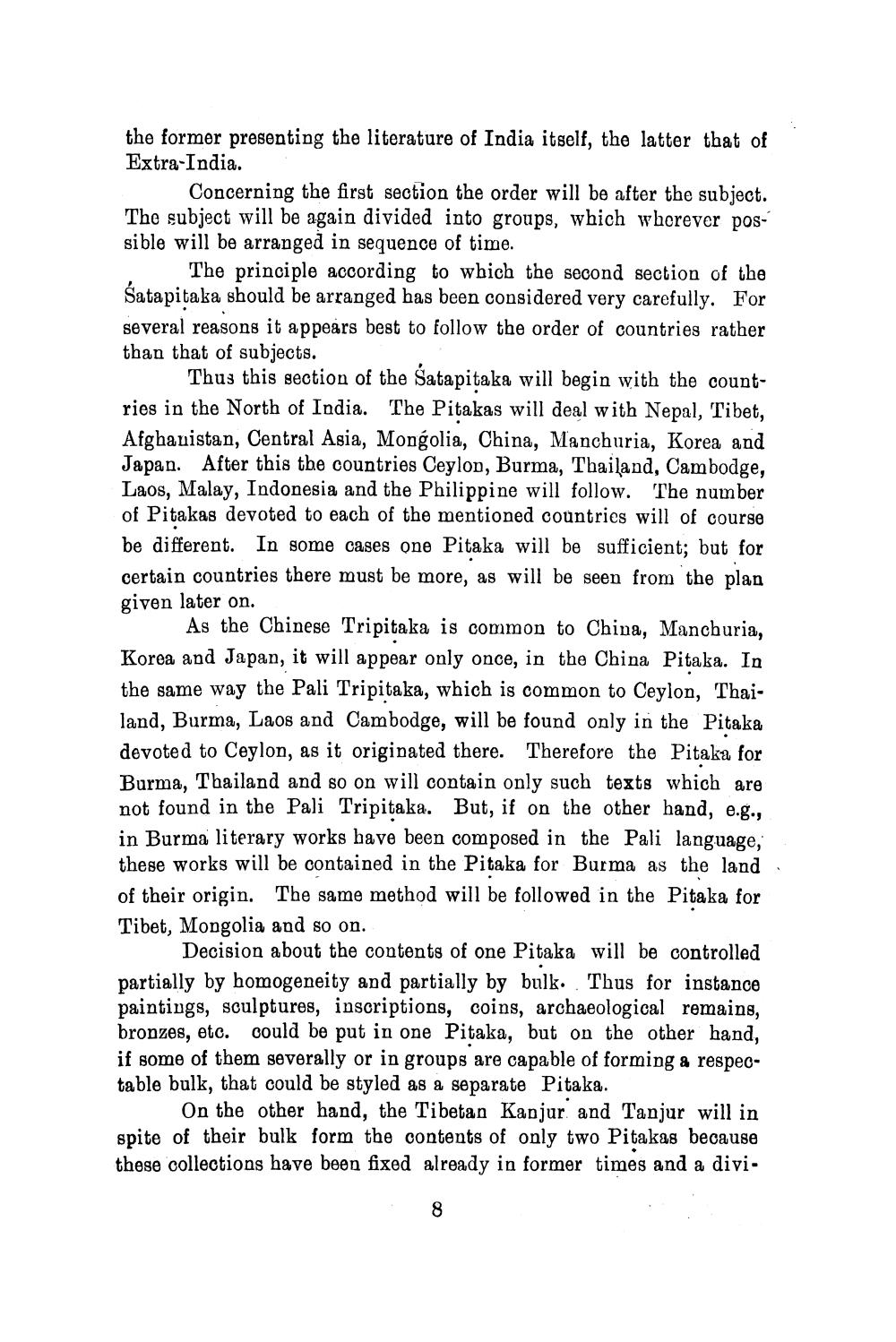________________ the former presenting the literature of India itself, the latter that of Extra-India. Concerning the first section the order will be after the subject. The subject will be again divided into groups, which wherever possible will be arranged in sequence of time. The principle according to which the second section of the Satapitaka should be arranged has been considered very carefully. For several reasons it appears best to follow the order of countries rather than that of subjects. Thus this section of the Satapitaka will begin with the countries in the North of India. The Pitakas will deal with Nepal, Tibet, Afghanistan, Central Asia, Mongolia, China, Manchuria, Korea and Japan. After this the countries Ceylon, Burma, Thailand, Cambodge, Laos, Malay, Indonesia and the Philippine will follow. The number of Pitakas devoted to each of the mentioned countries will of course be different. In some cases one Pitaka will be sufficient; but for certain countries there must be more, as will be seen from the plan given later on. As the Chinese Tripitaka is common to China, Manchuria, Korea and Japan, it will appear only once, in the China Pitaka. In the same way the Pali Tripitaka, which is common to Ceylon, Thailand, Burma, Laos and Cambodge, will be found only in the Pitaka devoted to Ceylon, as it originated there. Therefore the Pitaka for Burma, Thailand and so on will contain only such texts which are not found in the Pali Tripitaka. But, if on the other hand, e.g., in Burma literary works have been composed in the Pali language, these works will be contained in the Pitaka for Burma as the land of their origin. The same method will be followed in the Pitaka for Tibet, Mongolia and so on. Decision about the contents of one Pitaka will be controlled partially by homogeneity and partially by bulk. Thus for instance paintings, sculptures, inscriptions, coins, archaeological remains, bronzes, etc. could be put in one Pitaka, but on the other hand, if some of them soverally or in groups are capable of forming a respectable bulk, that could be styled as a separate Pitaka. On the other hand, the Tibetan Kanjur and Tanjur will in spite of their bulk form the contents of only two Pitakas because these collections have been fixed already in former times and a divi




